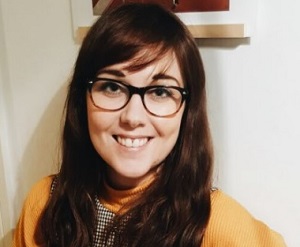Following the news that Lad Bible is now hiring staff as young as 16, Ellie Morley, marketing executive at APS Group looks at the changes amongst brands and publishers when marketing to millennials, how the term itself is evolving, along with why marketers can’t make assumptions about who these groups are and how to communicate to them.
The beginning of a new year always brings a wave of articles predicting the future state of marketing. ‘What marketers need to know about millennials in 2017,’ or ‘5 things companies still don’t know about content marketing’ are familiar headlines as we do our best to star-gaze.
Before it sounds like I’m bemoaning these types of articles, I’m not. Like many 20-something marketers I attend industry events, read four or five key marketing publications and am glued to most social channels. In fact, for many young, social brands, the ‘disrupters’ if you will, I’m their target market. Yet I’ve been to countless trade shows and conferences where my more senior peers are talking about how we can approach millennials. Well, you’re standing in front of one!
The millennial in the room
Spending less time thinking about how to approach millennials and actually talking to them is a strategy that the team at LAD Bible recently cottoned on to. It’s a brand I find really fascinating, mainly because of the huge transformation it underwent, waving goodbye to certain features and redefining lad culture. As part of its evolution, the publisher has undergone a series of structural changes, including the announcement that it would be employing staff as young as 16 in a bid to ‘understand the next phase of digital media.’
To be honest, I’m surprised it’s taken so long for organisations to figure this out. As media and marketing people, we’re always looking for ‘what’s next’ but it’s very difficult to do that unless there are people in the organisation that are actively engaging with new channels, technologies and so on. And predominantly, it’s still young people that do the majority of this exploration.
Think of it not unlike a focus group where you get people together to try something out and say what they like about it and whether or not it’s working – except these 16 year olds are living and breathing it day in, day out. And in the case of LAD Bible, they’re using that focus group, that insight, to drive the bigger strategy.
What’s in a name?
Perhaps part of the problem lies with the actual terminology we’re using. I meet people in the industry who still talk about Gen X, Gen Y and millennials as though these are new phrases. But if we’ve been saying ‘millennials’ for the last five years, then surely it’s already outdated?
The point is I don’t know anyone, even in the marketing world, who would refer to themselves as a millennial; probably because it’s a concept that’s evolving all the time. We always stress the importance of a ‘personalised, tailored approach’ in the industry but if you want to resonate with people then we have to filter it to be more specific than just referencing a group of people aged between 19 and 35. That’s a 16 year range.
A couple of years ago Ad Week wrote an article that distinguished the ’12 different types of millennials.’ Featuring groups like ‘the quarter-life crisis millennial,’ ‘travel enthusiasts’ and ‘culinary explorers,’ it was shaped more by their environment and interests than the year they were born.
We’ll have to see more of this in the future, thinking about what will influence and impact twenty year olds five or ten years before they even reach that age. I’m sure there will still be an element of star-gazing. But by bringing a new crowd into the mix – those that are directly responsible for influencing future trends – we’ll be able to see a little further than just twelve months ahead.
By Ellie Morley
Marketing executive
APS Group

